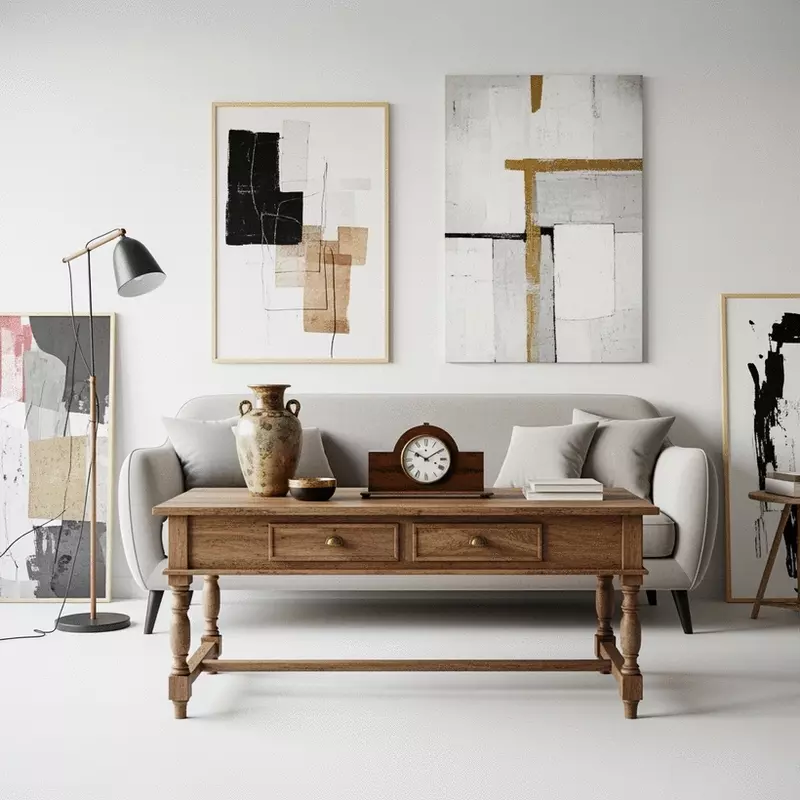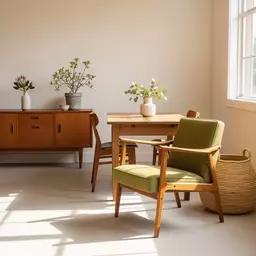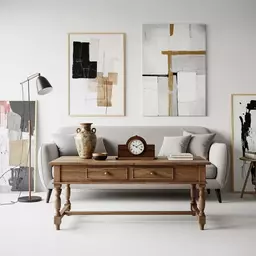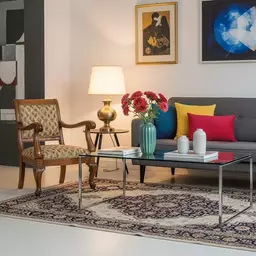Tools for Restoring Antique Furniture

Did you know that restoring antique furniture not only enhances your living space but also preserves history and craftsmanship? Every piece tells a story, and your efforts can keep that narrative alive for future generations. Dive into the world of restoration and discover the myriad benefits it brings!
What You Will Learn
- Understanding the historical significance of each antique piece contributes to preserving the past.
- Restoration honors craftsmanship by appreciating the skill that went into creating timeless furniture.
- Choosing to restore rather than replace promotes sustainability and reduces waste.
- The unique character of antique furniture adds depth and personality to your home décor.
- Restoration can be cost-effective compared to purchasing new, high-quality furniture.
- Essential tools like measuring tape and clamps are vital for successful restoration projects.
- Eco-friendly techniques in restoration ensure minimal harm to the environment while achieving outstanding results.
- Methods such as repurposing and upcycling contribute to a more sustainable approach in furniture restoration.
- Every restoration project is an opportunity to honor history and the artistry of past craftsmen.
Key Reasons for Antique Furniture Restoration
Exploring the essential reasons behind restoring antique furniture through a succinct comparison of benefits.
Historical Significance
Each antique piece represents a unique moment in history, showcasing the design and manufacturing techniques of its time.
Craftsmanship
Restoring furniture helps us appreciate the skill and dedication of craftsmen who created these timeless pieces.
Sustainability
By restoring rather than discarding, we contribute to a more eco-friendly approach to home decor.
Cost-Effectiveness
While the initial restoration might seem costly, it’s often less expensive than purchasing new, high-quality furniture.
Durability
Antique furniture was often built to last, using materials and construction methods that stand the test of time.
Sentimental Value
Restoring family heirlooms can bring back cherished memories and strengthen connections to your roots.
Understanding the Importance of Restoring Antique Furniture at Home
Restoring antique furniture at home is more than just a DIY project; it’s a journey into history and an opportunity to keep the craftsmanship alive! Each piece of antique furniture carries its own story, and by restoring it, you become a part of that narrative. At Antique Furniture Guide, we believe that every restoration project can transform not just the furniture but also your living space into a testament to timeless beauty. Learn more about blending antique furniture with modern decor to truly enhance your home.
Have you ever looked at a worn-out chair or table and thought about its past? What tales does it hold? By investing time and care into restoration, we preserve the heritage and artistry that are often lost in today’s mass-produced world. Let’s explore why antique furniture restoration matters.
Why Antique Furniture Restoration Matters
The importance of restoring antique furniture goes far beyond aesthetic appeal; it’s about preserving history and embracing sustainable practices. When we choose to restore instead of replace, we honor the craftsmanship of bygone eras and keep traditions alive for future generations. Not only does this approach maintain the furniture’s integrity, but it also reduces waste by breathing new life into items that might otherwise end up in landfills.
Here are several key reasons why restoration is essential:
- Historical Significance: Each antique piece represents a unique moment in history, showcasing the design and manufacturing techniques of its time.
- Craftsmanship: Restoring furniture helps us appreciate the skill and dedication of craftsmen who created these timeless pieces.
- Sustainability: By restoring rather than discarding, we contribute to a more eco-friendly approach to home decor.
Preserving Heritage and Craftsmanship
When we restore antique furniture, we take on the role of a caretaker for history. This process involves recognizing the work that went into each piece and ensuring it continues to be appreciated. Every scratch and imperfection tells a story of its journey. By carefully restoring these items, we help ensure that their craftsmanship is celebrated rather than forgotten. For safe and effective restoration, it's crucial to understand restoring antique furniture safely.
How can we ensure that this heritage is preserved? It starts with understanding the materials and techniques used in the original construction. For example, knowing whether a piece is made of solid wood or has veneer can influence how we approach restoration. Each decision taken reflects our commitment to honoring its past.
Benefits of Restoring Over Replacing
Opting to restore antique furniture rather than simply replacing it has numerous benefits. First and foremost, it allows you to maintain a unique character in your home that modern furniture often lacks. Have you noticed how mass-market designs tend to blend together? With antique pieces, you can have a focal point that adds depth and personality to your space.
What are some other advantages to consider?
- Cost-Effectiveness: While the initial restoration might seem costly, it’s often less expensive than purchasing new, high-quality furniture.
- Durability: Antique furniture was often built to last, using materials and construction methods that stand the test of time.
- Sentimental Value: Restoring family heirlooms can bring back cherished memories and strengthen connections to your roots.
Essential Tools That Every Home Restorer Should Have
Now that we’ve established the importance of restoration, let’s talk about the essential tools you need to embark on your restoration journey. Just like any craftsman, having the right tools can make all the difference in achieving beautiful results. At Antique Furniture Guide, we want to help you equip yourself properly!
Whether you’re a seasoned pro or just starting, these tools are vital:
- Measuring Tape: Accurate measurements are crucial for any restoration project.
- Clamps: These are essential when working with glued joints.
- Sandpaper: Perfect for smoothing surfaces before finishing.
Quick Summary
Here's a brief recap of the key points discussed so far:
- Historical Significance: Each antique piece carries a unique story, reflecting the craftsmanship of its era.
- Sustainability: Restoring furniture is an eco-friendly choice that reduces waste and promotes sustainable living.
- Personal Touch: Restored pieces add character and uniqueness to your home, enhancing its overall aesthetic.
Frequently Asked Questions About Antique Furniture Restoration
- Q: Why is restoring antique furniture important?
- A: Restoring antique furniture is important because it preserves historical significance, honors craftsmanship, promotes sustainability by reducing waste, and adds unique character to your home.
- Q: Is restoration more cost-effective than buying new furniture?
- A: Often, yes. While initial restoration costs can vary, it is frequently less expensive than purchasing new, high-quality furniture, especially considering the durability and lasting value of antiques.
- Q: What are some essential tools for home restoration projects?
- A: Key tools include measuring tape for accuracy, clamps for secure gluing, and sandpaper for smoothing surfaces. Other useful tools can be found in guides like tools for antique furniture care.
- Q: How can I ensure my restoration practices are eco-friendly?
- A: You can use eco-friendly techniques such as natural paints and varnishes, water-based adhesives, biodegradable cleaning products, and employ zero-waste practices like recycling and repurposing materials.
- Q: What is the difference between repurposing and upcycling in restoration?
- A: Repurposing involves transforming an old furniture piece into a new functional item (e.g., a dresser into a media console). Upcycling involves using components from damaged furniture to create something entirely new (e.g., wood from an old chair to craft a shelf).
Emphasizing Sustainable Practices in Furniture Restoration
In today’s world, embracing sustainability has become more crucial than ever. When it comes to antique furniture restoration, it's an opportunity to not only preserve beautiful pieces but also to practice eco-friendly methods. I believe that by focusing on sustainable practices, we can make a positive impact on our environment while enjoying the charm of vintage decor in our homes.
One key aspect of sustainable restoration is exploring eco-friendly techniques throughout the process. This means using materials and methods that minimize harm to our planet while still achieving excellent results. By integrating sustainability into our projects, we can contribute to the longevity of not just the furniture, but the environment as a whole.
Eco-Friendly Restoration Techniques
Choosing eco-friendly restoration techniques is not just about aesthetics; it’s about making conscious choices that benefit our planet. Here are some effective methods to consider:
- Using natural paints and varnishes that are free from harmful chemicals.
- Opting for water-based adhesives instead of solvent-based ones.
- Employing zero-waste practices, such as recycling old hardware and materials.
- Exploring biodegradable cleaning products for surface preparation.
Implementing these eco-friendly practices can enhance your restoration project while ensuring that we honor our responsibility to the environment. After all, every little change counts!
The Importance of Reducing Waste in Restoration
Another critical component of sustainable restoration is minimizing waste. Antique furniture often comes with a story and a legacy, and it’s essential to respect that by reducing unnecessary disposal. Here are some methods to effectively reduce waste:
- Repurposing: Transform old furniture into new, functional pieces, like turning a vintage dresser into a unique media console.
- Upcycling: Use components from damaged furniture to create something entirely new, such as using wood from an old chair to craft a stylish shelf.
- Donation: If a piece is beyond repair, consider donating it to local charities or community projects.
These methods not only contribute to a more sustainable approach but also foster creativity and innovation in the restoration journey! Consider exploring ways to infuse sustainability into your furniture choices, much like the insights found in sustainable furniture choices.
Encouraging Your Next Antique Furniture Restoration Project
As you embark on your restoration journey, remember that having the right tools can make all the difference. In my experience with the Antique Furniture Guide, I’ve seen how the right materials can elevate a project from ordinary to extraordinary. Here’s a quick summary of essential tools to keep in your toolkit:
- Key Materials: Paint, varnish, and finishing oils are crucial for achieving a polished final look.
- Restoration Tools: Hand tools and power tools are vital for effective restoration.
- Cleaning Supplies: Eco-friendly cleaners ensure the safety of both the furniture and the environment.
Call to Action: Start Your Restoration Journey Today
Now that you’ve discovered the importance of sustainable practices and the necessary tools, it’s time to take action! I encourage you to dive into your next antique furniture restoration project. Whether you’re a beginner or a seasoned restorer, every effort counts. Remember, each piece you restore not only adds beauty to your home but also honors the craftsmanship and history behind it. You might also find inspiration in mixing vintage and modern styles to create a truly unique aesthetic.
So, grab your tools and get ready to create something beautiful! Have fun restoring and don’t forget to share your progress with us at the Antique Furniture Guide. Your journey could inspire someone else to cherish the beauty of antiques and contribute to a more sustainable future!
Recap of Key Points
Here is a quick recap of the important points discussed in the article:
- Historical Significance: Restoring antique furniture preserves unique historical narratives and craftsmanship.
- Sustainability: Choosing to restore instead of replace reduces waste and promotes eco-friendly practices.
- Cost-Effectiveness: Restoration can be more economical compared to purchasing new furniture.
- Essential Tools: Key tools such as measuring tape, clamps, and sandpaper are critical for successful restoration projects.
- Eco-Friendly Techniques: Use natural paints and water-based adhesives to minimize environmental impact.
- Waste Reduction: Methods like repurposing and upcycling help honor the legacy of antique furniture.







